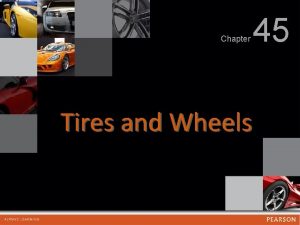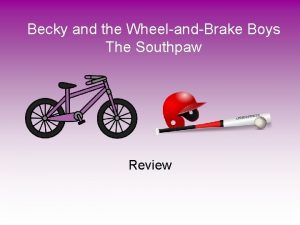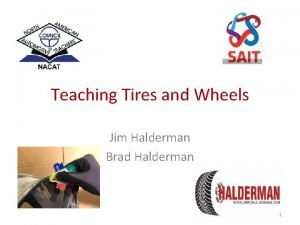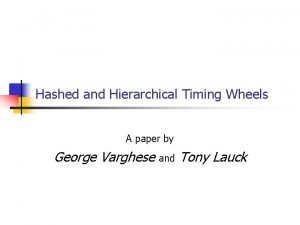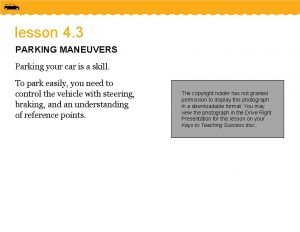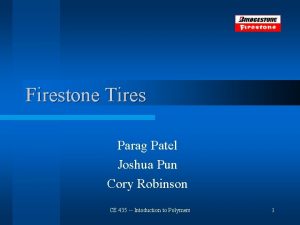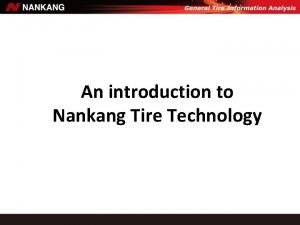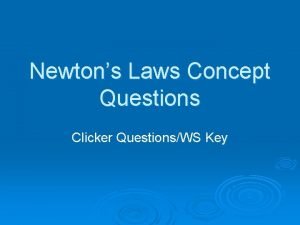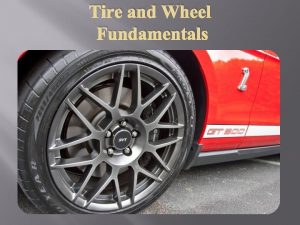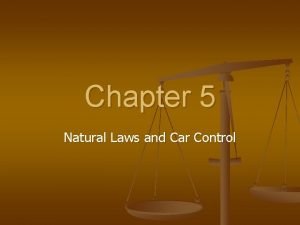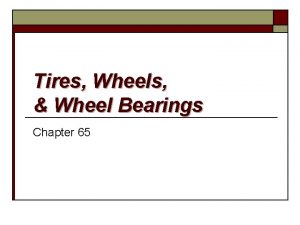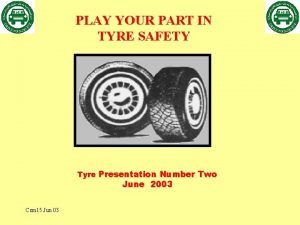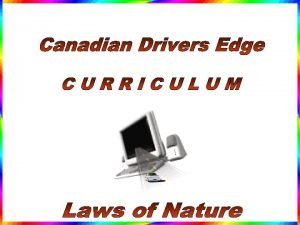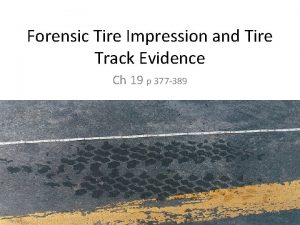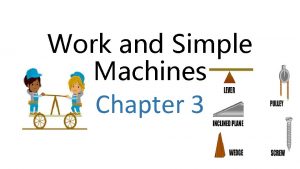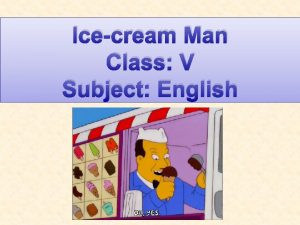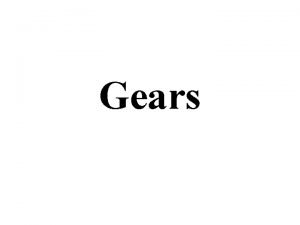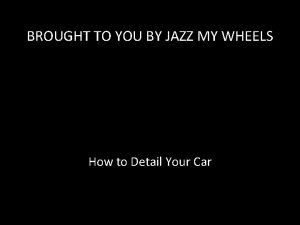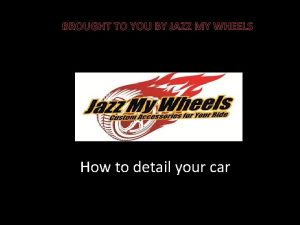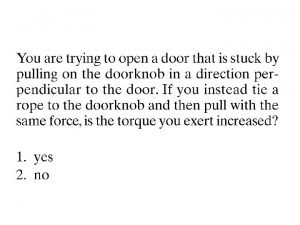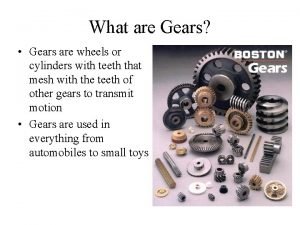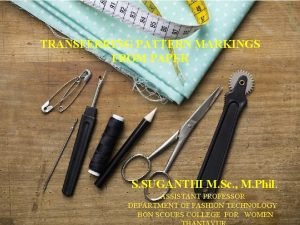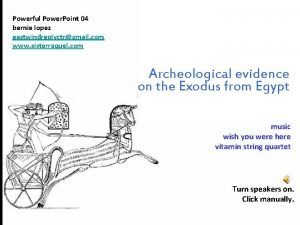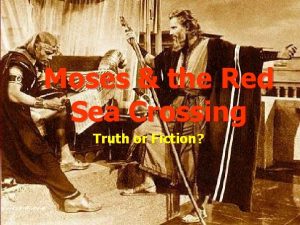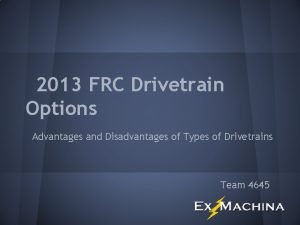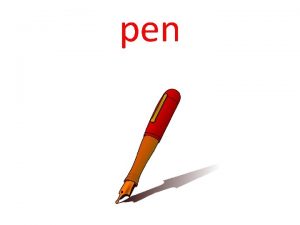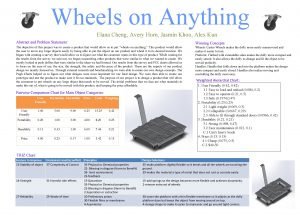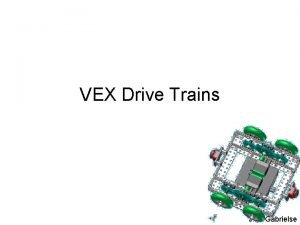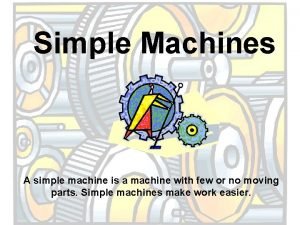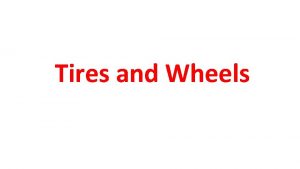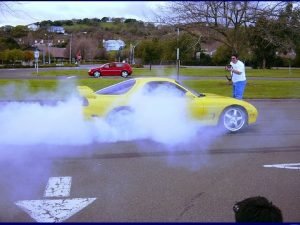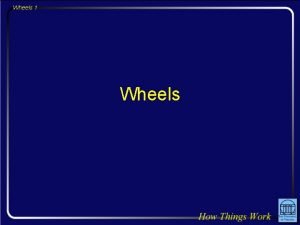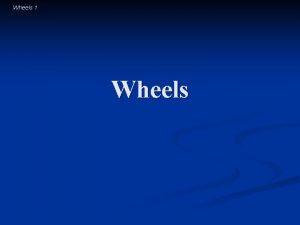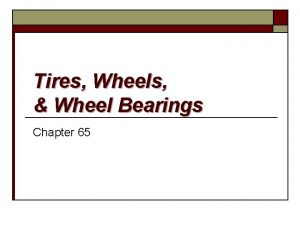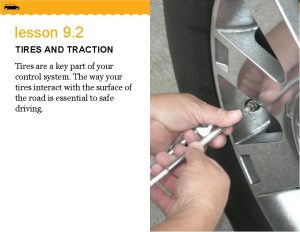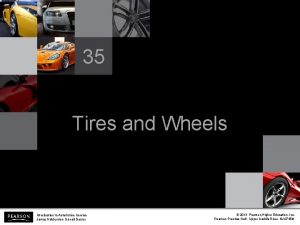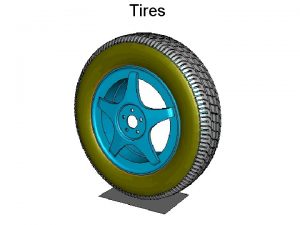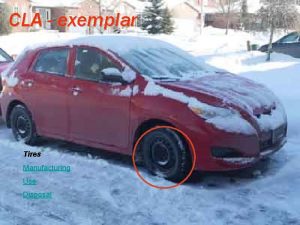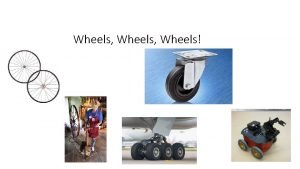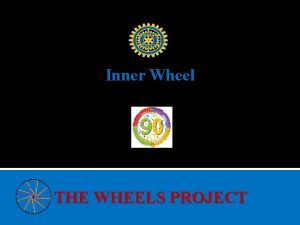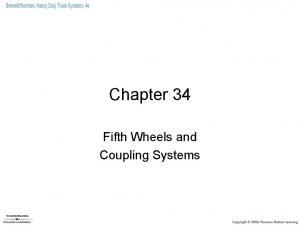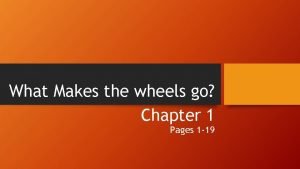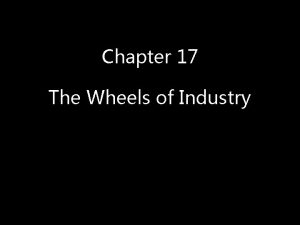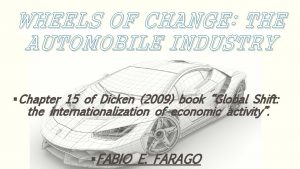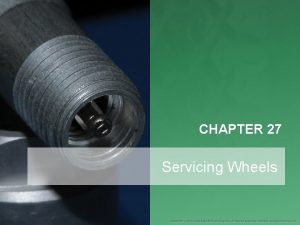Chapter 45 Tires and Wheels chapter 45 Tires












































- Slides: 44

Chapter 45 Tires and Wheels

chapter 45 Tires and Wheels FIGURE 45. 1 (a) A typical tire tread depth gauge. The center movable plunger is pushed down into the groove of the tire. (b) The tread depth is read at the top edge of the sleeve. In this example, the tread depth is 6/32 inch.

chapter 45 Tires and Wheels FIGURE 45. 2 Wear indicators (wear bars) are strips of bald tread that show when the tread depth is down to 2/32 inch, the legal limit in many states.

chapter 45 Tires and Wheels FIGURE 45. 3 The tire tread runs around the circumference of the tire, and its pattern helps maintain traction. The ribs provide grip, while the grooves direct any water on the road away from the surface. The sipes help the tire grip the road.

chapter 45 Tires and Wheels FIGURE 45. 4 Hydroplaning can occur at speeds as low as 30 mph (48 km/h). If the water is deep enough and the tire tread cannot evacuate water through its grooves fast enough, the tire can be lifted off the road surface by a layer of water. Hydroplaning occurs at lower speeds as the tire becomes worn.

chapter 45 Tires and Wheels FIGURE 45. 5 Typical construction of a radial tire. Some tires have only one body ply, and some tires use more than two belt plies.

chapter 45 Tires and Wheels FIGURE 45. 6 The major splice of a tire can often be seen and felt on the inside of the tire. The person who assembles (builds) the tire usually places a sticker near the major splice as a means of identification for quality control.

chapter 45 Tires and Wheels FIGURE 45. 7 Tire construction is performed by assembling the many parts of a tire together on a tire -building machine.

chapter 45 Tires and Wheels FIGURE 45. 8 After the entire has been assembled into a completed “green” tire, it is placed into a tire-molding machine where the tire is molded into shape and the rubber is changed chemically by heat. This nonreversible chemical reaction is called vulcanization.

chapter 45 Tires and Wheels FIGURE 45. 9 Notice that the overall outside diameter of the tire remains almost the same and at the same time the aspect ratio is decreased and the rim diameter is increased.

chapter 45 Tires and Wheels FIGURE 45. 10 (a) Tire size designation includes cross-sectional width and aspect ratio. (b) Cross- sectional view of a typical tire showing the terminology.

chapter 45 Tires and Wheels FIGURE 45. 11 Typical sidewall markings for load index and speed rating following the tire size.

chapter 45 Tires and Wheels CHART 45. 1

chapter 45 Tires and Wheels FIGURE 45. 12 The E. C. E. symbol on a sidewall of a tire. Notice the small -s at the end, indicating that the tire meets the “pass-by” noise limits.

chapter 45 Tires and Wheels FIGURE 45. 13 A typical door placard used on a General Motors vehicle indicating the recommended tire inflation. Note that the information also includes the size and speed rating of the tire as well as the recommended wheel size.

chapter 45 Tires and Wheels FIGURE 45. 14 Conicity is a fault in the tire that can cause the vehicle to pull to one side due to the cone effect (shape)of the tire.

chapter 45 Tires and Wheels FIGURE 45. 15 Notice the angle of the belt material in this worn tire. The angle of the belt fabric can cause a “ply steer” or slight pulling force toward one side of the vehicle.

chapter 45 Tires and Wheels FIGURE 45. 16 Slip angle is the angle between the direction the tire tread is heading and the direction it is pointed.

chapter 45 Tires and Wheels FIGURE 45. 17 Typical “Uniform Tire Quality Grading System” (UTQGS) ratings imprinted on the tire sidewall.

chapter 45 Tires and Wheels FIGURE 45. 18 Typical DOT date code. This tire was built the 52 nd week of 2010.

chapter 45 Tires and Wheels FIGURE 45. 19 Cutaway of a run-flat tire showing the reinforced sidewalls and the required pressure sensor.

chapter 45 Tires and Wheels FIGURE 45. 20 A conventional tire on the left and a run-flat tire on the right, showing what happens when there is no air in the tire.

chapter 45 Tires and Wheels FIGURE 45. 21 The PAX run-flat tire system is composed of three unique components—a special asymmetrical wheel, a urethane support ring, and a special tire.

chapter 45 Tires and Wheels FIGURE 45. 22 The Tire Performance Criteria (TPC) specification number is imprinted on the sidewall of all tires used on General Motors vehicles from the factory.

chapter 45 Tires and Wheels FIGURE 45. 23 The size of the wheel is usually cast or stamped into the wheel. This wheel is 7 inch wide. The letter “J” refers to the contour of the bead seat area of the wheel.

chapter 45 Tires and Wheels FIGURE 45. 24 The wheel rim well provides a space for the tire to fit during mounting; the bead seat provides a tire-towheel sealing surface; the flange holds the beads in place.

chapter 45 Tires and Wheels FIGURE 45. 25 A cross section of a wheel showing part designations.

chapter 45 Tires and Wheels FIGURE 45. 26 Offset is the distance between the centerline of the wheel and the wheel mounting surface.

chapter 45 Tires and Wheels FIGURE 45. 27 Back spacing (rear spacing) is the distance from the mounting pad to the edge of the rim. Most custom wheels use this measurement method to indicate the location of the mounting pad in relation to the rim.

chapter 45 Tires and Wheels FIGURE 45. 28 Bolt circle is the diameter of a circle that can be drawn through the center of each lug hole or stud. The bolt circle is sometimes referred to as PCD for pitch circle diameter.

chapter 45 Tires and Wheels FIGURE 45. 29 Measuring the bolt circle on a five-lug wheel is difficult, but a quick and easy way includes measuring as shown to determine the approximate bolt circle of a five-lug wheel.

chapter 45 Tires and Wheels FIGURE 45. 30 Measure center-to-center distance and compare the distance to the figures in the chart in the text to determine the diameter for a five-lug bolt circle.

chapter 45 Tires and Wheels FIGURE 45. 31 A typical JWL symbol for the Japan Wheel Light Metal standard mark.

chapter 45 Tires and Wheels FIGURE 45. 32 (a) A rubber snap-in style tire valve assembly. (b) A metal clamp-type tire valve assembly used on most high-pressure (over 60 PSI) tire applications such as is found on many trucks, RVs, and trailers. The internal Schrader valve threads into the valve itself and can be replaced individually, but most experts recommend replacing the entire valve assembly every time the tires are replaced to help prevent air loss.

chapter 45 Tires and Wheels FIGURE 45. 33 Various styles of lug nuts.

chapter 45 Tires and Wheels UNFIGURE 45. 1 Check the tire information placard, usually located on the driver’s door or door jamb, for the specified tire size and inflation pressure.

chapter 45 Tires and Wheels UNFIGURE 45. 2 Visually check the tires for abnormal wear or damage.

chapter 45 Tires and Wheels UNFIGURE 45. 3 Remove the tire valve cap and visually check the condition of the valve stem.

chapter 45 Tires and Wheels UNFIGURE 45. 4 Check inflation pressure by pushing the tire-pressure gauge straight onto the end of the tire valve. If a “hissing” sound is heard, then the reading will not be accurate.

chapter 45 Tires and Wheels UNFIGURE 45. 5 Read the pressure and compare to specifications. Use an analog or digital gauge if possible which have been proven to be more accurate than a mechanical penciltype gauge.

chapter 45 Tires and Wheels UNFIGURE 45. 6 Visually check the tires for abnormal wear or damage.

chapter 45 Tires and Wheels UNFIGURE 45. 7 The blade of the tire tread depth gauge is pushed down into the groove of the tire at the lowest part.

chapter 45 Tires and Wheels UNFIGURE 45. 8 Remove the gauge from the tire and read the tread depth at the metal housing. Tread depth is usually measured in 1/32’s of an inch.

chapter 45 Tires and Wheels UNFIGURE 45. 9 If the top of Lincoln’s head is visible, then the tread depth is lower than 2/32 inch, the legal limit in many states.
 45 tires and wheels
45 tires and wheels Ezekiel's vision of the wheels within wheels
Ezekiel's vision of the wheels within wheels Becky and the wheels and brake boys
Becky and the wheels and brake boys Rotate tires pattern
Rotate tires pattern Hierarchical timing wheel
Hierarchical timing wheel Mitas tires north america inc
Mitas tires north america inc How to turn your wheels when parking uphill
How to turn your wheels when parking uphill Cory parag
Cory parag Treadwear meaning
Treadwear meaning A small sports car collides head on
A small sports car collides head on Tubeless tires
Tubeless tires Os tires
Os tires What improvements have been made to kevlar
What improvements have been made to kevlar When tires are underinflated, it leads to ______.
When tires are underinflated, it leads to ______. Which type of muscle tires quickly during exercise
Which type of muscle tires quickly during exercise Safety type drop center wheels
Safety type drop center wheels 205r80 12 tires
205r80 12 tires Friction is ______ if your tires are under-inflated
Friction is ______ if your tires are under-inflated Tire impression
Tire impression How do you calculate mechanical advantage
How do you calculate mechanical advantage Reversed thought in romeo and juliet act 2
Reversed thought in romeo and juliet act 2 Maglev pros and cons
Maglev pros and cons Mounds of cooling brown and white
Mounds of cooling brown and white Are gears wheeels
Are gears wheeels Innovative color wheel
Innovative color wheel What is a k turn
What is a k turn Jazz my wheels
Jazz my wheels Jazz my wheels
Jazz my wheels Two wheels roll side by side
Two wheels roll side by side Are gears wheels
Are gears wheels Dressmaker's carbon paper is usually used in this method
Dressmaker's carbon paper is usually used in this method Chariot wheels in red sea
Chariot wheels in red sea Red sea underwater land bridge
Red sea underwater land bridge Perpendicular parking
Perpendicular parking Unfortunately for vanessa the wheels on her suitcase
Unfortunately for vanessa the wheels on her suitcase Omni wheels frc
Omni wheels frc Fields on wheels
Fields on wheels My pencil is... the books the notebooks. *
My pencil is... the books the notebooks. * Co wheels aberdeen
Co wheels aberdeen Apex trolley wheels
Apex trolley wheels Nitra wheels
Nitra wheels Vex omni wheel
Vex omni wheel Where did moses part the red sea
Where did moses part the red sea What are the example of simple machine
What are the example of simple machine Meals on wheels san mateo
Meals on wheels san mateo
